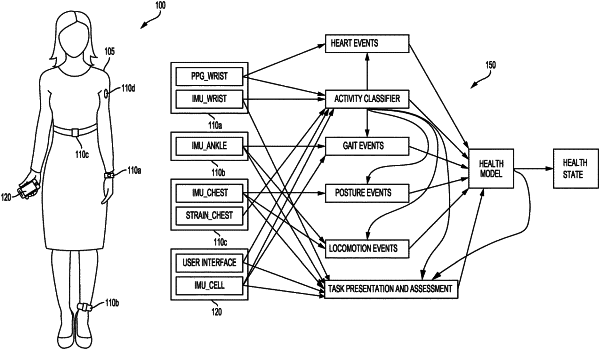| CPC G16H 40/67 (2018.01) [G16H 20/30 (2018.01); G16H 40/63 (2018.01)] | 20 Claims |

|
1. A body-mountable device that is mountable to a body segment of a person and that comprises:
a first sensor configured to monitor motion of the body segment of the person when the body-mountable device is mounted to the body segment of the person;
a second sensor configured to monitor performance of a motor task;
a user interface; and
a controller communicatively coupled to the first sensor, the second sensor, and the user interface, wherein the controller comprises a computing device programmed to perform operations comprising:
obtaining a baseline activity profile;
detecting, using the first sensor during a first period of time, a first signal relating to motion of the body segment of the person;
determining, based on the first signal and the baseline activity profile, that a motor activity of the person during the first period of time differs from the baseline activity profile;
responsive to determining that the motor activity of the person during the first period of time differs from the baseline activity profile, (i) using the user interface to provide a prompt to perform a motor task, and (ii) activating the second sensor to measure one or more properties related to performing the motor task and to output a second signal based on measurement of the one or more properties; and
after using the user interface to provide the prompt, using the second sensor to detect the second signal related to performance of the motor task.
|